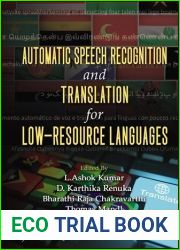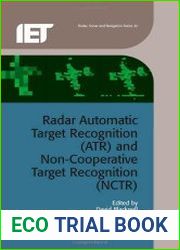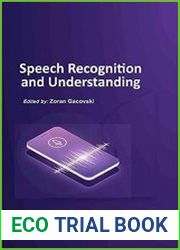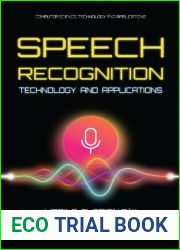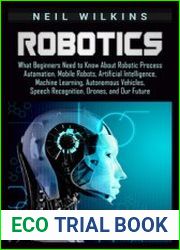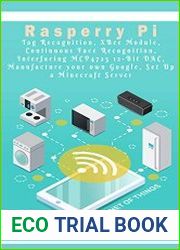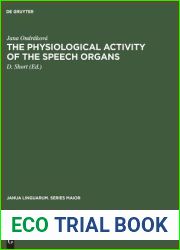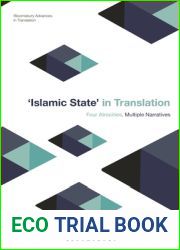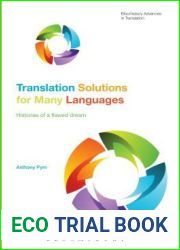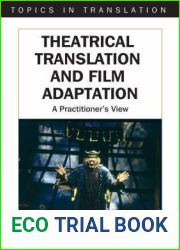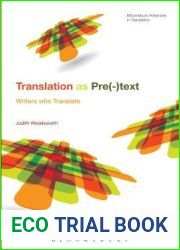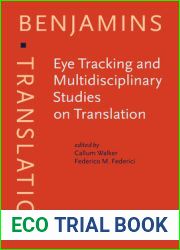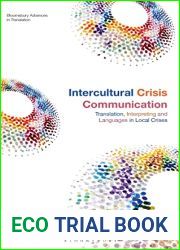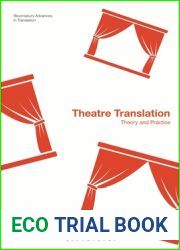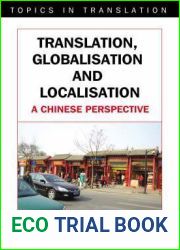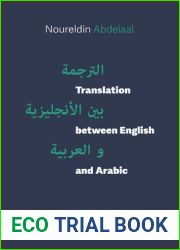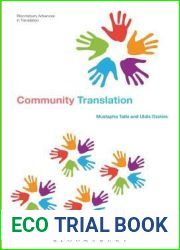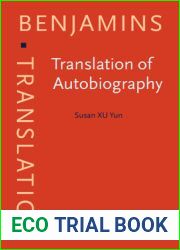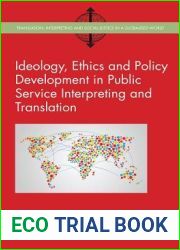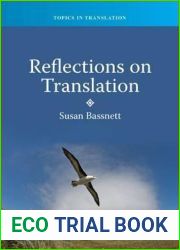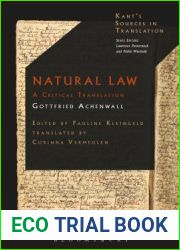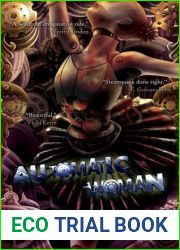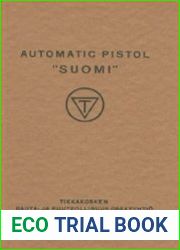
BOOKS - Automatic Speech Recognition and Translation for Low Resource Languages

Automatic Speech Recognition and Translation for Low Resource Languages
Author: L. Ashok Kumar, D. Karthika Renuka, Bharathi Raja Chakravarthi
Year: 2024
Pages: 646
Format: EPUB
File size: 42.5 MB
Language: ENG

Year: 2024
Pages: 646
Format: EPUB
File size: 42.5 MB
Language: ENG

Automatic Speech Recognition and Translation for Low-Resource Languages: A Comprehensive Exploration Introduction The world is witnessing an unprecedented era of technological advancements, with Automatic Speech Recognition (ASR) and Machine Translation (MT) being at the forefront of innovation. However, the development of these technologies has largely focused on high-resource languages, leaving low-resource languages behind. This book takes a comprehensive approach to addressing the unique challenges associated with ASR and translation for low-resource languages, providing groundbreaking research and solutions to overcome these obstacles. Chapter 1: Fundamentals of ASR and Translation The book begins by delving into the fundamental concepts of ASR and translation, providing readers with a solid foundation for understanding the subsequent chapters. Topics covered include the basics of speech recognition, machine translation, and the challenges faced by low-resource languages. Chapter 2: Factors Contributing to Challenges in Low-Resource Languages This chapter explores the factors that contribute to the challenges in low-resource languages, such as limited data availability, lack of linguistic resources, and the need for tailored solutions. The significance of developing personalized paradigms for perceiving the technological process of developing modern knowledge is also discussed.
Автоматическое распознавание и перевод речи для языков с ограниченными ресурсами: комплексное исследование Введение Мир переживает беспрецедентную эру технологических достижений, причем автоматическое распознавание речи (ASR) и машинный перевод (MT) находятся на переднем крае инноваций. Однако развитие этих технологий в значительной степени было сосредоточено на языках с высокими ресурсами, оставляя позади языки с низкими ресурсами. Эта книга использует комплексный подход к решению уникальных проблем, связанных с ASR и переводом для языков с ограниченными ресурсами, предоставляя новаторские исследования и решения для преодоления этих препятствий. Глава 1: Основы ASR и перевода Книга начинается с того, что углубляется в фундаментальные концепции ASR и перевода, предоставляя читателям прочную основу для понимания последующих глав. Рассматриваемые темы включают основы распознавания речи, машинного перевода и проблемы, с которыми сталкиваются языки с ограниченными ресурсами. Глава 2: Факторы, способствующие возникновению проблем в языках с ограниченными ресурсами В этой главе рассматриваются факторы, способствующие возникновению проблем в языках с ограниченными ресурсами, такие как ограниченная доступность данных, нехватка лингвистических ресурсов и необходимость в индивидуальных решениях. Обсуждается также значение разработки персонализированных парадигм для восприятия технологического процесса развития современных знаний.
Reconnaissance automatique et traduction vocale pour les langues à ressources limitées : une étude complète Introduction monde traverse une ère sans précédent de progrès technologiques, avec la reconnaissance vocale automatique (ASR) et la traduction automatique (MT) à la pointe de l'innovation. Cependant, le développement de ces technologies s'est largement concentré sur les langues à ressources élevées, laissant derrière elles des langues à faibles ressources. Ce livre adopte une approche intégrée pour relever les défis uniques liés à l'ASR et à la traduction pour les langues à ressources limitées, en fournissant des recherches et des solutions novatrices pour surmonter ces obstacles. Chapitre 1 : Bases de l'ASR et de la traduction livre commence par approfondir les concepts fondamentaux de l'ASR et de la traduction, offrant aux lecteurs une base solide pour comprendre les chapitres suivants. s sujets abordés comprennent les bases de la reconnaissance vocale, de la traduction automatique et des problèmes rencontrés par les langues à ressources limitées. Chapitre 2 : Facteurs à l'origine des problèmes dans les langues à ressources limitées Ce chapitre examine les facteurs à l'origine des problèmes dans les langues à ressources limitées, tels que la disponibilité limitée des données, le manque de ressources linguistiques et la nécessité de solutions individuelles. L'importance du développement de paradigmes personnalisés pour la perception du processus technologique du développement des connaissances modernes est également discutée.
Reconocimiento automático y traducción de voz para idiomas de recursos limitados: un estudio integral Introducción mundo está viviendo una era sin precedentes de avances tecnológicos, con el reconocimiento automático de voz (ASR) y la traducción automática (MT) a la vanguardia de la innovación. n embargo, el desarrollo de estas tecnologías se ha centrado en gran medida en lenguas de altos recursos, dejando atrás las lenguas de bajos recursos. Este libro adopta un enfoque integral para abordar los desafíos únicos relacionados con la ASR y la traducción para lenguajes con recursos limitados, proporcionando investigaciones y soluciones innovadoras para superar estos obstáculos. Capítulo 1: Fundamentos de ASR y traducción libro comienza profundizando en los conceptos fundamentales de ASR y traducción, proporcionando a los lectores una base sólida para entender los capítulos siguientes. temas abordados incluyen los fundamentos del reconocimiento de voz, la traducción automática y los desafíos que enfrentan los lenguajes con recursos limitados. Capítulo 2: Factores que contribuyen a los problemas en los idiomas con recursos limitados Este capítulo examina los factores que contribuyen a los problemas en los idiomas con recursos limitados, como la disponibilidad limitada de datos, la escasez de recursos lingüísticos y la necesidad de soluciones individuales. También se discute la importancia de desarrollar paradigmas personalizados para percibir el proceso tecnológico del desarrollo del conocimiento moderno.
Riconoscimento automatico e traduzione vocale per lingue con risorse limitate: ricerca completa Introduzione Il mondo sta attraversando un'era di progressi tecnologici senza precedenti, con il riconoscimento vocale automatico (ASR) e la traduzione automatica (MT) all'avanguardia nell'innovazione. Tuttavia, lo sviluppo di queste tecnologie si è concentrato in gran parte sulle lingue con risorse elevate, lasciando alle spalle quelle con risorse ridotte. Questo libro utilizza un approccio completo per affrontare i problemi unici di ASR e traduzione per lingue con risorse limitate, fornendo ricerche e soluzioni innovative per superare questi ostacoli. Capitolo 1: basi di ASR e traduzione Il libro inizia approfondendo i concetti fondamentali di ASR e traduzione, fornendo ai lettori una solida base per comprendere i capitoli successivi. I temi trattati includono le basi per il riconoscimento vocale, la traduzione automatica e i problemi che incontrano le lingue con risorse limitate. Capitolo 2: Fattori che creano problemi nelle lingue con risorse limitate Questo capitolo affronta i fattori che creano problemi nelle lingue con risorse limitate, come la limitata disponibilità dei dati, la scarsità di risorse linguistiche e la necessità di soluzioni individuali. discute anche dell'importanza di sviluppare paradigmi personalizzati per la percezione del processo tecnologico di sviluppo delle conoscenze moderne.
Automatische Spracherkennung und -übersetzung für Sprachen mit begrenzten Ressourcen: eine umfassende Studie Einleitung Die Welt erlebt eine beispiellose Ära technologischer Fortschritte, wobei automatische Spracherkennung (ASR) und maschinelle Übersetzung (MT) an der Spitze der Innovation stehen. Die Entwicklung dieser Technologien konzentrierte sich jedoch weitgehend auf Sprachen mit hohen Ressourcen und hinterließ Sprachen mit geringen Ressourcen. Dieses Buch verfolgt einen integrierten Ansatz zur Lösung der einzigartigen Herausforderungen im Zusammenhang mit ASR und Übersetzung für Sprachen mit begrenzten Ressourcen und bietet bahnbrechende Forschung und Lösungen zur Überwindung dieser Hindernisse. Kapitel 1: Grundlagen von ASR und Übersetzung Das Buch beginnt mit einer Vertiefung in die grundlegenden Konzepte von ASR und Übersetzung und bietet den sern eine solide Grundlage, um die nachfolgenden Kapitel zu verstehen. Zu den behandelten Themen gehören die Grundlagen der Spracherkennung, der maschinellen Übersetzung und die Herausforderungen, denen Sprachen mit begrenzten Ressourcen gegenüberstehen. Kapitel 2: Faktoren, die zu Problemen in Sprachen mit begrenzten Ressourcen beitragen Dieses Kapitel befasst sich mit Faktoren, die zu Problemen in Sprachen mit begrenzten Ressourcen beitragen, wie z. B. eingeschränkte Datenverfügbarkeit, Mangel an sprachlichen Ressourcen und die Notwendigkeit maßgeschneiderter Lösungen. Die Bedeutung der Entwicklung personalisierter Paradigmen für die Wahrnehmung des technologischen Prozesses der Entwicklung modernen Wissens wird ebenfalls diskutiert.
Automated Speech Recognition and Translation for Resource-Restrrained Languages: A Comprehensive Study Introduction Świat przeżywa bezprecedensową erę postępu technologicznego, z automatycznym rozpoznawaniem mowy (ASR) i tłumaczeniem maszynowym (MT) w czołówce innowacji. Rozwój tych technologii koncentrował się jednak w dużej mierze na językach o wysokich zasobach, pozostawiając po sobie języki o niskich zasobach. Książka ta przyjmuje zintegrowane podejście do rozwiązywania unikalnych wyzwań związanych z ASR i tłumaczeniem języków ograniczonych zasobami, zapewniając innowacyjne badania i rozwiązania w celu pokonania tych przeszkód. Rozdział 1: Podstawy ASR i tłumaczenia Książka rozpoczyna się od zagłębiania się w podstawowe koncepcje ASR i tłumaczenia, zapewniając czytelnikom solidne podstawy do zrozumienia kolejnych rozdziałów. Poruszone tematy obejmują podstawy rozpoznawania mowy, tłumaczenia maszynowego oraz wyzwania stojące przed językami o ograniczonych zasobach. Rozdział 2: Czynniki przyczyniające się do rozwiązywania problemów w językach ubogich w zasoby Niniejszy rozdział omawia czynniki przyczyniające się do problemów w językach ubogich w zasoby, takie jak ograniczona dostępność danych, brak zasobów językowych oraz potrzeba dostosowanych rozwiązań. Omawiane jest również znaczenie rozwoju spersonalizowanych paradygmatów dla postrzegania procesu technologicznego rozwoju nowoczesnej wiedzy.
''
Kaynak Kısıtlı Diller için Otomatik Konuşma Tanıma ve Çeviri: Kapsamlı Bir Çalışma Tanıtımı Dünyada benzeri görülmemiş teknolojik gelişmeler yaşanıyor, otomatik konuşma tanıma (ASR) ve makine çevirisi (MT) inovasyonun ön saflarında yer alıyor. Bununla birlikte, bu teknolojilerin gelişimi büyük ölçüde düşük kaynaklı dilleri geride bırakarak yüksek kaynaklı dillere odaklanmıştır. Bu kitap, ASR'nin benzersiz zorluklarını ele almak ve kaynak kısıtlı diller için çeviri yapmak için entegre bir yaklaşım benimsiyor ve bu engellerin üstesinden gelmek için yenilikçi araştırmalar ve çözümler sunuyor. Bölüm 1: ASR ve Çevirinin Temelleri Kitap, ASR ve çevirinin temel kavramlarını inceleyerek başlar ve okuyuculara sonraki bölümleri anlamak için sağlam bir temel sağlar. Kapsanan konular arasında konuşma tanıma, makine çevirisi ve sınırlı kaynaklara sahip dillerin karşılaştığı zorlukların temelleri yer almaktadır. Bölüm 2: Kaynak-Yoksul Dillerdeki Sorunlara Katkıda Bulunan Faktörler Bu bölüm, sınırlı veri kullanılabilirliği, dilsel kaynak eksikliği ve özel çözümlere duyulan ihtiyaç gibi kaynak-yoksul dillerdeki sorunlara katkıda bulunan faktörleri tartışmaktadır. Modern bilginin gelişiminin teknolojik sürecinin algılanması için kişiselleştirilmiş paradigmalar geliştirmenin önemi de tartışılmaktadır.
التعرف الآلي على الكلام وترجمته للغات المقيدة بالموارد: مقدمة دراسة شاملة يشهد العالم حقبة غير مسبوقة من التطورات التكنولوجية، مع التعرف الآلي على الكلام (ASR) والترجمة الآلية (MT) في طليعة الابتكار. ومع ذلك، فإن تطوير هذه التكنولوجيات قد ركز إلى حد كبير على اللغات ذات الموارد العالية، تاركًا وراءه لغات منخفضة الموارد. يتبع هذا الكتاب نهجًا متكاملاً للتصدي للتحديات الفريدة المتمثلة في ASR وترجمة اللغات المحدودة الموارد، وتوفير بحوث وحلول مبتكرة للتغلب على هذه العقبات. الفصل 1: أساسيات ASR والترجمة يبدأ الكتاب بالخوض في المفاهيم الأساسية لـ ASR والترجمة، مما يوفر للقراء أساسًا متينًا لفهم الفصول اللاحقة. تشمل الموضوعات التي تمت تغطيتها أساسيات التعرف على الكلام والترجمة الآلية والتحديات التي تواجهها اللغات ذات الموارد المحدودة. الفصل 2: العوامل المساهمة في مشاكل اللغات الفقيرة بالموارد يناقش هذا الفصل العوامل التي تسهم في مشاكل اللغات الفقيرة بالموارد، مثل محدودية توافر البيانات، والافتقار إلى الموارد اللغوية، والحاجة إلى حلول مصممة خصيصا لذلك. وتناقش أيضا أهمية وضع نماذج شخصية لتصور العملية التكنولوجية لتطور المعرفة الحديثة.
資源有限的語言的自動語音識別和翻譯:綜合研究介紹世界正經歷著前所未有的技術進步時代,自動語音識別(ASR)和機器翻譯(MT)處於創新的最前沿。但是,這些技術的發展主要集中在資源豐富的語言上,而資源少的語言則被拋在後面。本書采用綜合方法來解決與ASR和資源有限的語言翻譯相關的獨特問題,並提供創新的研究和解決方案來克服這些障礙。第1章:ASR和翻譯的基礎本書首先深入研究ASR和翻譯的基本概念,為讀者提供了解後續章節的堅實基礎。所討論的主題包括語音識別的基礎,機器翻譯以及資源有限的語言面臨的挑戰。第二章:資源有限的語文問題的原因本章討論了資源有限的語文問題的原因,例如數據供應有限、缺乏語文資源和需要個別解決辦法。還討論了開發個性化範式對現代知識發展過程感知的重要性。










